As promised, we took a closer look at the state of the Supreme Court’s gun-carry case. Oral arguments gave us a lot of insight into where the Court is headed in this case.
The questions and comments made by the justices indicated what kind of gun-carry permit law they think passes constitutional muster. I take a look at that and what forcing the remaining holdouts to adopt the law they’re leaning towards would look like in practice.
Then Jake takes a look at the standard of review the Court hinted they may formalize and the effect it might have. Plus, he looks forward at the other category of laws the Court might take up next.
Before we get to that, though, I wanted to give you guys a heads up that the auction for my charity range day is almost over. All proceeds go to benefit wounded veterans. So, bid today!
(Oh, and if you make it to the end of the newsletter, you’ll see the “ghost gun” I bought on Saturday.)
Last Chance to Bid on My Charity Auction
The safety training and range day I’m auctioning off as part of Homes For Our Troops celebrity auction is still up for grabs. But, not for long! I’ll provide the guns and the ammo. All of the money you spend goes directly to building specialized homes for wounded veterans. It’s a great experience for a great cause.
So, bid today! Before it’s too late…
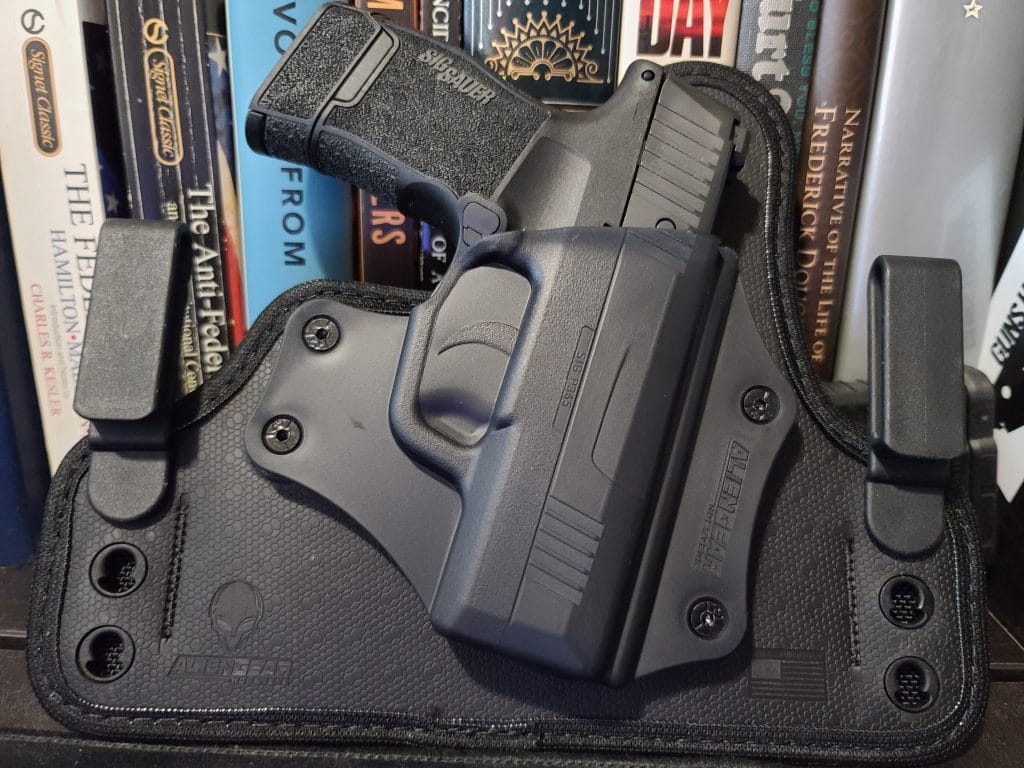
Analysis: The Effect SCOTUS Striking Down New York’s Gun-Carry Law Would Have
By Stephen Gutowski
New York has a particularly restrictive gun-carry law, and there’s good reason to believe the Supreme Court is about to strike it down after what the justices said in last week’s oral arguments.
First off, the fact that the Court took this case at all gives some indication they plan to overrule the lower court’s decision to uphold the law. While certainly not impossible, the Court rarely grants an appeal in a case like this one only to uphold the decision being appealed. Then you have the makeup of the Court, which most observers believe is somewhere between a 6-3 and 5-4 divide on expanding Second Amendment protections with Chief Justice John Roberts as the swing vote.
Then, of course, you have what the justices said during oral arguments. Roberts, Neil Gorsuch, Bret Kavanaugh, Samuel Alito, Amy Coney Barret, and Clarence Thomas all asked more critical questions of the law than of the case against it. Though, as is usually the case, their inquires weren’t entirely in one direction.
None of these things are foolproof indicators. The Court isn’t always as predictable as it may seem. Some experts have argued it may strike down New York’s law or could do so in a way that doesn’t create much of a precedent.
But, what exactly would it look like if they do strike it down?
Well, for one, a specific alternative to New York’s restrictive “may-issue” gun-carry law popped up repeatedly during oral arguments on Wednesday: “shall-issue” permits. The main difference between the two regimes is that, while a license is still required, under “shall-issue,” the discretion of government officials in issuing permits is significantly reduced.
Under “shall-issue” regimes, if somebody passes a background check and completes the required training, they must be given a permit. Under “may-issue” regimes, those same people could be denied if the official responsible for issuing the permit decided they don’t have a “good reason” to need a license.
How can a state justify giving government officials subjective discretion over citizens’ exercise of a constitutional right? That was the main thrust of questioning by several Supreme Court justices.
Kavanaugh specifically framed the core question of the case as “a narrow legal issue of ‘shall issue’ versus ‘may issue.’” He pressed New York on why it couldn’t adopt a “shall issue” regime the way 43 other localities have.
“It seems like before you impose more restrictions on individual citizens and infringe their constitutional rights, based on this theory, you should have to show, ‘well, in those other states that have shall issue regimes, actually there is a lot more accidents, crime,’” he said. “And I don’t see any real evidence of that.”
Roberts went a bit further and questioned the entire idea of requiring permitting when a constitutional right is implicated.
“Regardless of what the right is, it would be surprising to have it depend upon a permit system,” he said. “You can say that the right is limited in a particular way, just as First Amendment rights are limited, but the idea that you need a license to exercise the right, I think, is unusual in the context of the Bill of Rights.”
However, he retreated to the basic idea of a “shall issue” permit while elaborating.
“There’s licensing, and there’s licensing,” he said. “Maybe it’s one thing to say we need to check, make sure you don’t have a criminal record, make sure that all the other things you can check on, but not that we assume you don’t have a right to exercise your, It’s hard to say it without saying it, exercise your right
under the Second Amendment, and you’ve got to show us that you do.”
The law’s defenders argued the history of “may issue” laws dating back to the 19th century makes them presumptively compatible with the Second Amendment. Plus, they warned moving to a “shall issue” would lead to more violence in a populous state such as New York. Justice Breyer argued if people were allowed to carry a gun purely for generic self-defense concerns, it would lead to people shooting each other more often.
“Is it supposed to say you can carry a concealed gun around the streets or the town or outside just for fun? I mean, they are dangerous, guns,” Breyer said. “The difference, of course, you have a concealed weapon to go hunting. You’re out with an intent to shoot, say, a deer or a rabbit, which has its problems. But, here, when you have a self-defense… just for whatever you want to carry a concealed weapon, you go shooting it around, and somebody gets killed.”
Paul Clement, the plaintiffs’ lawyer, responded they weren’t asking for anything other than the same kind of laws that most of the country has successfully operated under for decades or even centuries.
“With respect, Justice Breyer, that’s not been the experience in the 43 jurisdictions that allow their citizens to have the same rights that my clients are looking for,” he said. “This is not something where we’re asking you to take some brave new experiment that no jurisdiction in Anglo-American history have ever done. We’d like what they’re having. We’d like what the people in the other 43 states are allowed to do and exercise their rights, and in many of those states, it’s shall issue.”
If “shall issue” is the ultimate winner in this case, what does that mean in practice?
Well, there are only currently eight states left with “may issue” regimes. However, they include populous states such as New York, New Jersey, Massachusetts, and California. That means about 25 percent of the country currently lives under a “may issue” regime and would be far more likely to obtain a concealed carry permit under a Court-ordered “shall issue” regime.
However, it may not be the kind of gun-rights paradise (or nightmare scape depending on your point of view) some envision. Washington, D.C. serves as a great example of how things could go in these eight states where voters prefer strict gun laws.
After federal judges struck down its total ban on gun carry, D.C. passed a “may issue” law and denied nearly all applications. Then, that law was struck down as well, and D.C. was forced to adopt a “shall issue” law. It did just that, but with a few catches.
Unlike its neighbor Virginia, which requires just a background check and widely-available NRA gun safety training, D.C. created unique training requirements and a trainer certification process. The 16-hour course costs several hundred dollars on top of the $110 in application and fingerprinting fees. It also has to be renewed every two years, compared to five in most states.
Plus, the law creates hundreds of gun-free zones dotting the city. And it bans carry on all public transit.
Add in the regular processing delays, and you get a situation where obtaining a permit is practically limited only to people who have the time and money to jump through all the hoops successfully. That’s likely why the city has only issued a few thousand.
What D.C. has done will serve as the playbook for states forced to adopt a “shall issue” law. And, don’t expect them to recognize permits from any other states either. D.C. hasn’t and, even though the city was forced to issue licenses to non-residents, the lack of reciprocity has kept the number of people who can legally carry in the nation’s capital relatively limited.
Still, even with all of that in mind, a ruling setting “shall issue” as the new standard for gun-carry laws means millions and millions more Americans will probably become gun carriers.

Analysis: How a ‘Text, History, and Tradition’ Method For Reviewing Gun Cases Might Work in Practice [Member Exclusive]
By Jake Fogleman
When the Supreme Court heard oral arguments in the New York gun-carry case last Wednesday, multiple justices expressed interest in determining the correct framework for evaluating New York’s law and other gun regulations. Lawyers from both sides of the case—and indeed even amicus briefs filed on behalf of both sides—argued for a “text, history, and tradition” approach.
The concept of applying text, history, and tradition as the method of assessing gun regulations is often attributed to Justice Brett Kavanaugh from his time as a judge on the D.C. Circuit Court of Appeals. In his Heller II dissent, then-judge Kavanaugh outlined what a text, history, and tradition test would look like based on the Supreme Court’s landmark decisions in District of Columbia v. Heller and McDonald v. Chicago.
“Heller was up-front about the role of text, history, and tradition in Second Amendment analysis – and about the absence of a role for judicial interest balancing or assessment of costs and benefits of gun regulations,” he wrote. “Gun bans and gun regulations that are longstanding – or, put another way, sufficiently rooted in text, history, and tradition – are consistent with the Second Amendment individual right. Gun bans and gun regulations that are not longstanding or sufficiently rooted in text, history, and tradition are not consistent with the Second Amendment individual right.”
It’s an approach to Second Amendment law that has long been touted by advocates for gun rights who believe such a standard would render many currently existing and future gun laws impermissible. Indeed, there is some evidence for that. Kavanaugh’s Heller II dissent, for example, gave a forceful argument for why Washington, D.C.’s assault-weapon ban and registration requirement would fail under the framework.
However, Kavanaugh also left the door open for many gun-control laws to pass muster under such a test that would not be able to clear other tests.
“Indeed, governments appear to have more flexibility and power to impose gun regulations under a test based on text, history, and tradition than they would under strict scrutiny,” he wrote. “After all, history and tradition show that a variety of gun regulations have co-existed with the Second Amendment right and are consistent with that right, as the Court said in Heller. By contrast, if courts applied strict scrutiny, then presumably very few gun regulations would be upheld.”
Those defending New York’s law understand this and claim the text, history, and tradition approach supports the state’s restrictive permitting regime that allows officials to deny applicants they decide don’t have a “good cause” to carry a concealed gun.
Historian Saul Cornell, a gun-control proponent and one of the amici who filed a brief in support of the law, detailed the good cause permitting regimes that existed in various states throughout the late 19th and early 20th centuries. These regimes granted jurisdictions broad discretion in deciding who could lawfully carry a concealed firearm in public.
“Reconstruction ushered in a period of expansive regulation,” he wrote in a law review article. “Courts, legislators, and commentators during this period recognized that the robust power to regulate firearms, particularly in public, was not only constitutional, but essential to preserve ordered liberty. The key innovation in this period, a development that became the dominant model of firearms regulation in America, good cause permit schemes continue to function as an important part of efforts to address the problem of gun violence.”
As a result, he suggests that such schemes are entirely compatible with a text, history, and tradition framework.
“These laws are indisputably presumptively lawful under Heller’s framework,” he wrote.
Gun-rights supporters have pointed out that many of these laws were passed with ulterior motives, nominally functioning to promote public safety but in reality being used to keep disfavored groups from exercising their right to arms. The same argument was applied directly to New York’s law which opponents argue was passed with the intent to discriminate against Italians and Blacks. However, New York’s defenders argue there’s insufficient historical evidence to explicitly show the racist intent of these laws and say they were applied broadly. They argue concealed carry restrictions, or restrictions on all forms of gun carry, are consistent with the country’s “history and tradition” and thus compatible with the Second Amendment.
This argument was echoed by Brian Fletcher, acting United States solicitor general, in the NYSRPA v. Bruen oral arguments. He dismissed Justice Alito’s inquiry into whether or not racial animus factored into New York’s Sullivan Act—the law that forms the basis for the state’s current carry regime—as insufficiently persuasive while maintaining a preference for the Court to uphold the law under a text, history, and tradition test.
However, Kavanaugh’s Heller II dissent offers some insight into how the Court might view these historical analogs to carry restrictions, even with their racial motivations in dispute. Kavanaugh implied that 20th century or even 19th centuries laws that go against the plain meaning of the Second Amendment’s text don’t hold water despite their age.
“Post-ratification adoption or acceptance of laws that are inconsistent with the original meaning of the constitutional text obviously cannot overcome or alter that text,” he wrote, citing the Court’s reversal on segregation in the landmark case Brown v. Board of Education as an example. “That an unconstitutional action has been taken before surely does not render that same action any less unconstitutional at a later date.”
The petitioners in the case against New York’s restrictive carry law mirrored this line of thinking in crafting their arguments to the Court.
“Founding-era cases, commentaries, and laws on both sides of the Atlantic, most of which were surveyed in Heller, confirm that the founding generation understood the Second Amendment and its English predecessor to guarantee a right to carry common arms for self-defense,” the petitioner’s brief said. “The American tradition of protecting that right remained virtually unbroken in the century and a half following ratification; severe restrictions on the right to carry arms typically arose only in the context of efforts to disarm disfavored groups, like blacks in the South and immigrants in the Northeast. Those outlying and discriminatory efforts only underscore the framers’ wisdom in enshrining the right of all ‘The People’ to keep and bear arms in our founding document.”
Thus, the argument goes, because the Second Amendment was understood to broadly protect a right to bear arms when it was ratified, later laws prohibiting the exercise of that right cannot overcome the actual text of the amendment.
A text, history, and tradition approach—if officially established by the Court in this case—would at the very least clarify how lower courts review future gun cases that will inevitably come before them. While a survey of American history and the original intent of the Second Amendment would seem to lend itself to upholding fewer gun control laws, courts could continue to have discretion in evaluating the historical record, with all of its variety, to justify desired outcomes.
It’s hard to see the Ninth Circuit, for example, completely reversing course from its decision in Young v. Hawaii just because the Supreme Court established such a standard for evaluating gun laws. However, on balance, gun-rights proponents would have cause for optimism if the Court adopts a text, history, and tradition standard moving forward.

Analysis: How Other Gun Permit Schemes Could be Called into Question After Carry Case [Member Exclusive]
By Jake Fogleman
With the Supreme Court approaching a decision in a case against restrictive “may issue” gun-carry permit laws, the legality of other atypical permitting schemes may soon be called into question.
Purchasing permits, for example, require an individual to obtain a license from their local or state government before they are legally allowed to buy a gun. Nine states, many of the same ones with restrictive gun-carry laws, currently have such laws for some or all types of firearms.
One of those states, Illinois, requires its citizens to obtain a Firearm Owners Identification (FOID) card to legally purchase and maintain possession of a firearm or ammunition in the state. Earlier this year, an Illinois circuit court judge made headlines when he ruled the FOID requirement unconstitutional.
“A citizen in the State of Illinois is not born with a Second Amendment right,” Judge T. Scott Webb said. “Nor does that right insure when a citizen turns 18 or 21 years of age. It is a façade. They only gain that right if they pay a $10 fee, complete the proper application, and submit a photograph. If the right to bear arms and self-defense are truly core rights, there should be no burden on the citizenry to enjoy those rights.”
The ruling was appealed up to the Illinois Supreme Court, where oral arguments have not yet been held and likely won’t be until after the U.S. Supreme Court’s decision in the carry case. However, a top Madison County official just filed an amicus brief in support of overturning the state’s FOID law.
“It is the position of this office that to require a resident of the State of Illinois to fill out a form, provide a picture ID and pay a fee to obtain a FOID card before exercising their constitutional right to self-defense with a firearm is a per se violation of the Second Amendment to the United States Constitution, as applied to the States,” Madison County State’s Attorney Tom Haine said in his brief.
The arguments of the prosecutor, and the circuit court judge who ruled against the FOID system, center around the legality of requiring a license before someone can enjoy their right to keep and bear arms. It’s an argument that has certainly been made before, but it could take on new weight with recent events at the U.S. Supreme Court.
During oral arguments in the gun-carry case, Chief Justice Roberts offered a line of questioning that probed the very concept of requiring a permit for the exercise of a constitutional right.
“Regardless of what the right is, it would be surprising to have it depend upon a permit system,” he said. “You can say that the right is limited in a particular way, just as First Amendment rights are limited, but the idea that you need a license to exercise the right, I think, is unusual in the context of the Bill of Rights.”
While he ultimately pulled back a bit from this line of questioning, it speaks to an issue the Court is wrestling with: attempting to reconcile licensing regimes for a person to exercise an enumerated constitutional right.
The Court also made frequent references to the possibility of establishing a text, history, and tradition standard for deciding the New York case and other future gun cases presented to lower courts. If established by the Court, that too could have major implications for the legality of the FOID system in Illinois, as indicated by the amicus brief filed by the Illinois prosecutor.
“History shows there is no analogous Founding era regulation that is similar to the universal scope of the FOID Act’s pre-possession licensure requirement for all firearms,” Haine said.
Depending on the scope of the Court’s ruling in the gun-carry case, laws requiring permits to own a firearm could very well be called into question. If the Court strikes down the discretionary carry permit scheme and establishes a text, history, and tradition test, the likelihood of Illinois’ FOID system being struck down certainly increases. If that happens, it would have major implications for other states with comparable purchase permit laws.
Podcast: Meet the Former Green Beret Training Civilians in Emergency Medicine [Member Early Access]
By Stephen Gutowski
Kenny Robertson of Wex Training Group joins me this week to talk about a new emergency medical training program aimed at concealed carriers.
Robertson spent 22 years in the Army Green Berets as part of the 5th Special Forces Group. He served in Afghanistan, Iraq, Syrian, and Lebanon as a medic. After that, he spent years training others to do the same thing as director of the Tactical Casualty Combat Care and Prolonged Field Care programs at the Joint Special Operations Medical Training Center in Fort Bragg, NC.
Now, he’s teamed up with Brandon Wexler and Charrie Derosa of Wex Gunworks in Delray Beach, Florida to bring that same level of training to the civilian world. The high-profile gun shop, which has been featured everywhere from NBC News to The Washington Post to The Washington Free Beacon, hopes to bring that same caliber of training to those who carry guns.
Robertson was nice enough to give me a demo of the class recently. I was lucky enough to go through a Stop the Bleed course when I trained with FASTER Colorado a few years ago. The principles in the Wex class are much the same, but the experience is elevated.
For one, it’s much more visceral. More realistic. Ultimately, more impactful.
Lots of training courses have training tourniquets and CPR dummies. Wex takes that to the next level by adding detailed training dummies, including ones that actually bleed.
It’s far more memorable to try and apply a tourniquet high and tight when blood is literally spurting out onto your hands. When the skin feels natural and the flesh compresses like the real thing, it hits differently in your mind. The added feedback of actually witnessing the bleeding stop instead of just imagining it is game-changing.
On top of that, Robertson’s real-life stories of how he has applied these techniques to save lives in the field make it all that much more memorable.
It’s the kind of training I’m convinced people who concealed carry should invest in. After all, we spend thousands to carry a gun in the unlikely case we’ll be in a deadly force incident. Well, if you’re preparing for what might happen in a shootout, you should probably prepare for what you’ll do if you or somebody else actually gets shot.
All the same principles apply here. You can’t count on a medic getting to you before you bleed out. So, you better learn to help yourself.
Besides, you’re more likely to run into some sort of medical emergency in your daily life than you are to run into a deadly force attack. Better to be prepared than sorry.
You can listen to the whole show on your favorite podcasting app or by clicking here.
You can also watch the video podcast on our YouTube channel.
I Bought a ‘Ghost Gun’ From Sears
By Stephen Gutowski
I’m not much of a gun collector, but sometimes the unique history of a firearm intrigues me enough to make me pull the trigger on a purchase.
The Sears Model 66 I saw at my local gun shop today fits that bill. It’s not every day you see a gun rollmark that bears the name of a department store. Well, not anymore at least.
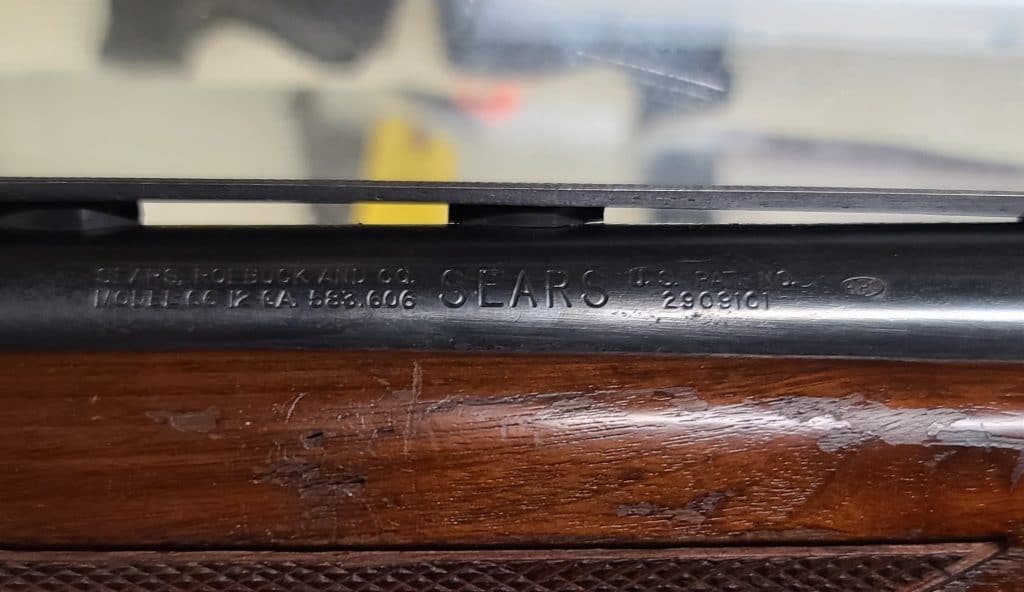
It’s also not every day that you see a mass-produced gun with no serial number. Well, not anymore at least.
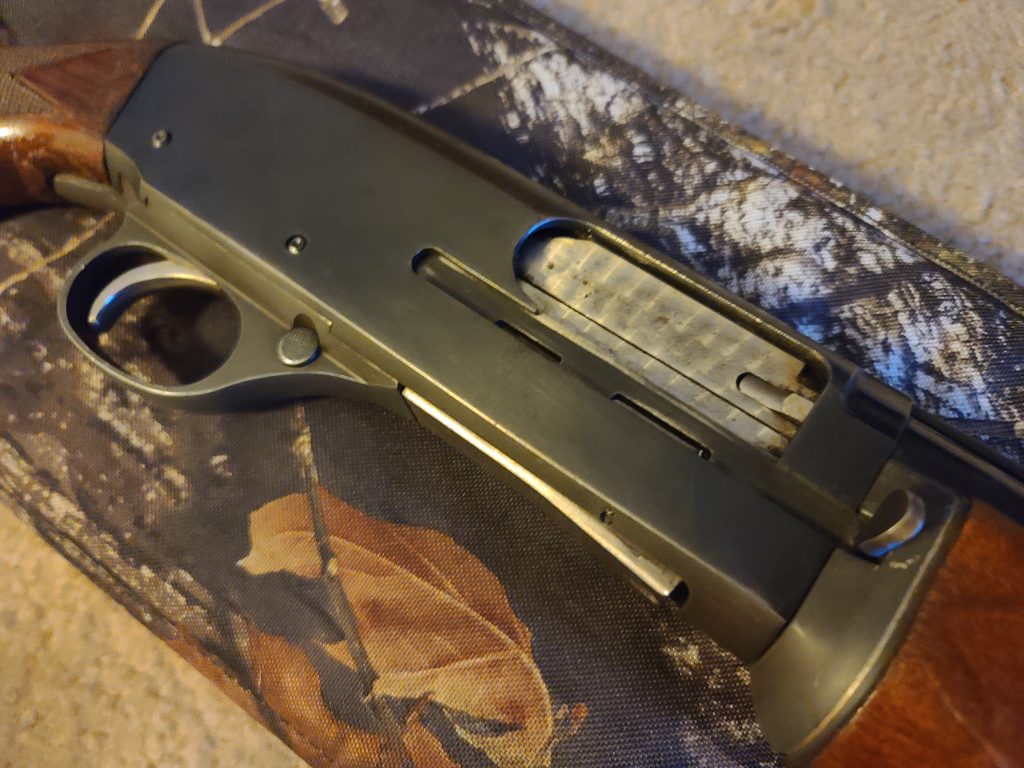
That makes this a mail-order “ghost gun.” One that was mass-produced by the country’s biggest retailer and shipped to doorsteps across the country. Not something you see every day. Well, you get the idea…
This is a gun from a bygone era. It’s a relic that reminds us how different our gun laws were not all that long ago.
This shotgun, probably made and sold in the 1950s or early 1960s, was not required to carry a serial number embedded in it because it predates the Gun Control Act of 1968. That’s the same reason it was legal to sell and ship it through the mail.
But, that was before a series of political assassinations from JFK to MLK to RFK led to new restrictions on how guns could be sold in America and who they could be sold to.
Now, if you want a gun without a serial number on it, you either have to buy one of these relics or you have to make your own. And President Biden wants to change that too. Dealers may soon have to add serial numbers to unserialized guns in their inventory.
It’s interesting to think that it’s only been about 50 years since Americans could buy unserialized guns from a Sears catalog and have them shipped straight to their door. And it’s been less than 100 years since they could do the same with genuine machine guns.
The fact that these things would be practically unthinkable in our current political environment, even if Republicans retook control of the federal government, speaks to how quickly sweeping federal gun reforms have put down thick roots. It’s not clear these rules are going anywhere anytime soon even if our current murder rate appears to be comparable to the years before they were implemented.
Honestly, most gun owners are used to this now too. Many just think of it as the way things are and younger owners probably don’t realize this isn’t how things have always been. It’s funny how things change and become the new normal, but it’s clear that is what happened over the lifespan of this gun.
One other thing is clear too. Modern “ghost guns” don’t quite have the same look to them as this Sears classic. To say the least.

Modern “ghost guns” are still cool. But, in a different way. They require much more knowledge and dedication to build than buying a rebranded High Standard C-100 from the Sears & Roebuck catalog. That’s just a different experience altogether.
Anyway, I’m not really sure what I’m going to do with this gun. I think I’ll use it to shoot some clays. That should work out alright.
It’s the first semi-automatic shotgun I’ve ever owned. Plus, it’s got a fantastic-looking variable choke on the end of it. And it only cost me $175. Pretty damn cool!
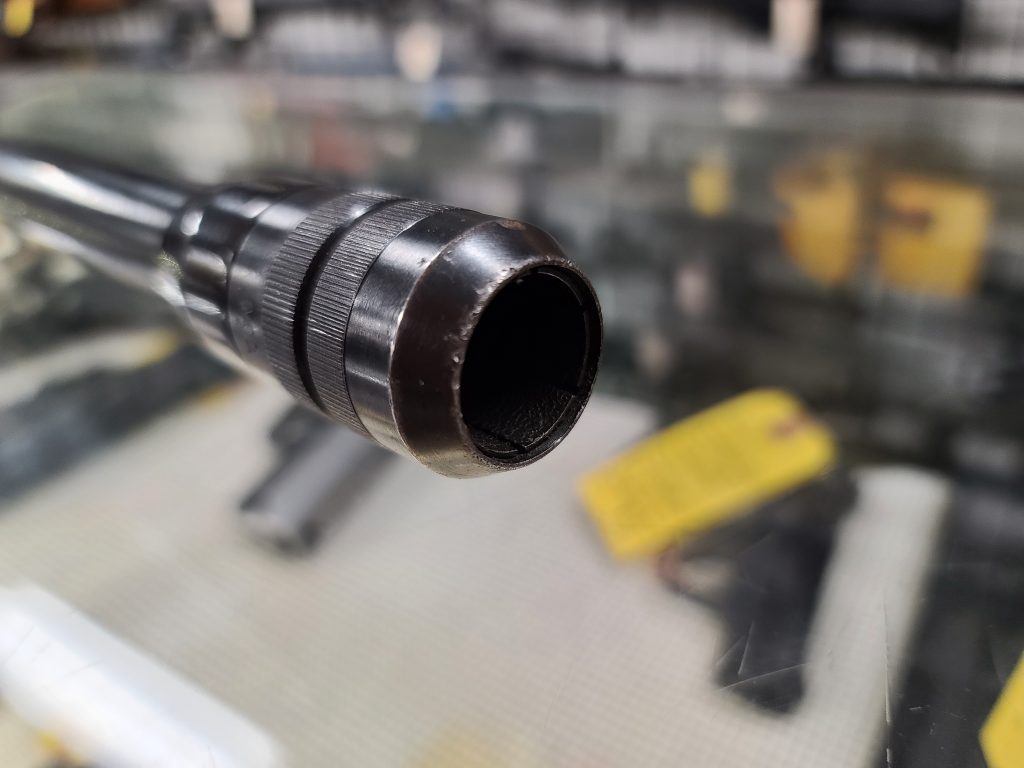
I’ll let you guys know what it shoots like once I disassemble it, lube it, and take it to the range.
That’s it for now.
I’ll talk to you all again soon.
Thanks,
Stephen Gutowski
Founder
The Reload


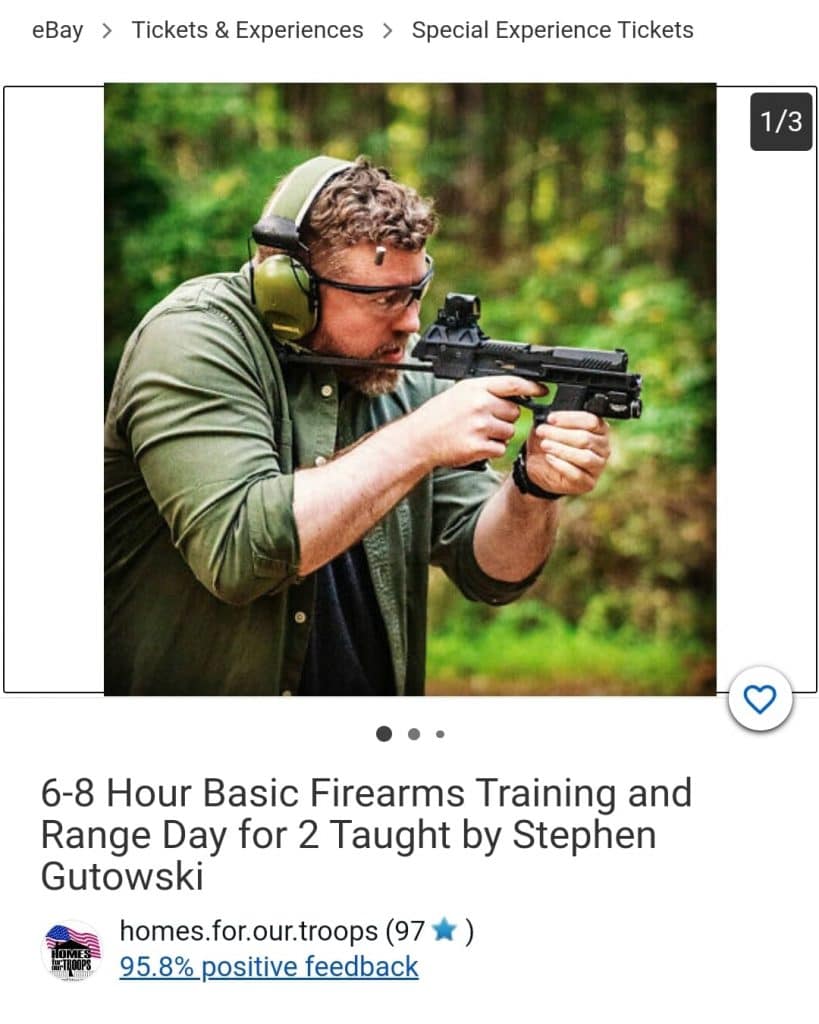







Only Members can view comments. Become a member today to join the conversation.